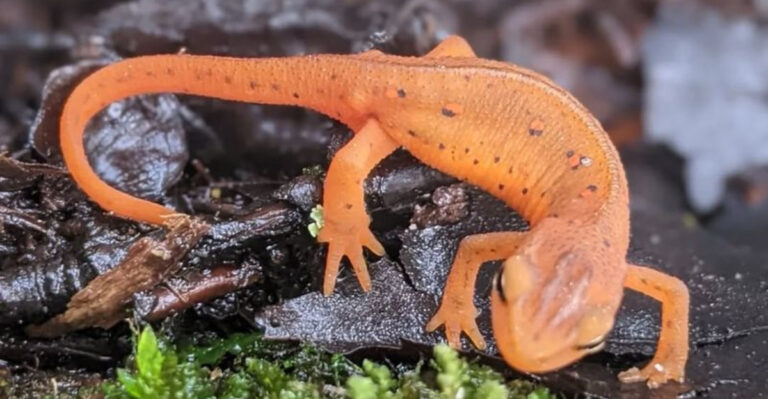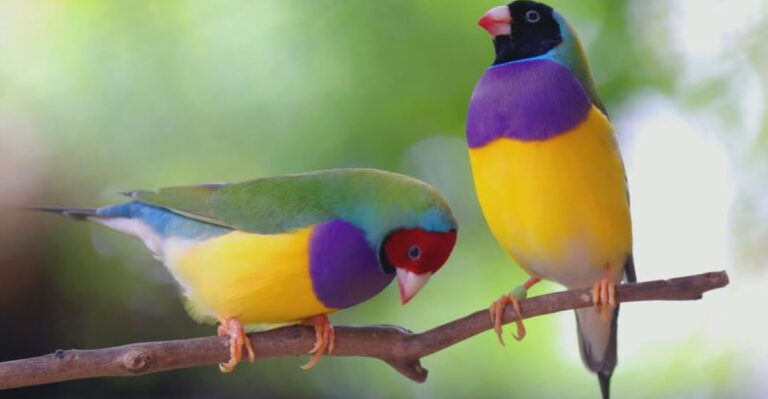Top 8 Gar Fish Species For Your Aquarium (If You Are Up For A Challenge)
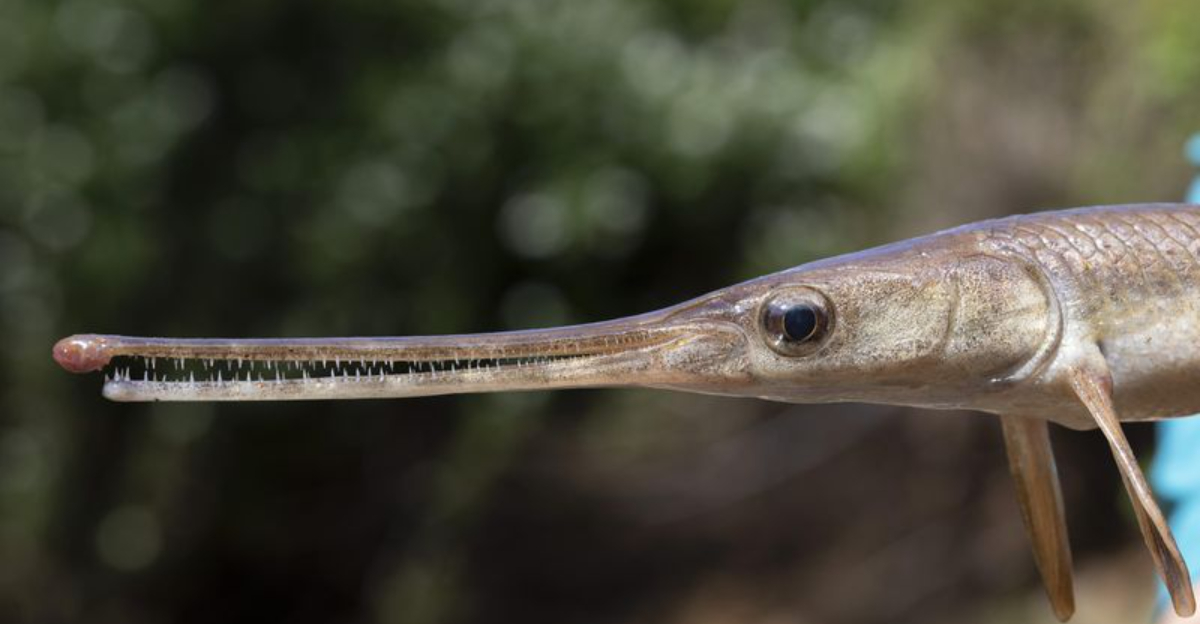
Gar fish are known for their elongated bodies and prehistoric appearance, making them a unique addition to any aquarium. However, they require special care and a substantial commitment due to their size and specific needs.
Here are the top gar fish species that can become the centerpiece of your aquarium, if you’re ready for the challenge.
1. Alligator Gar
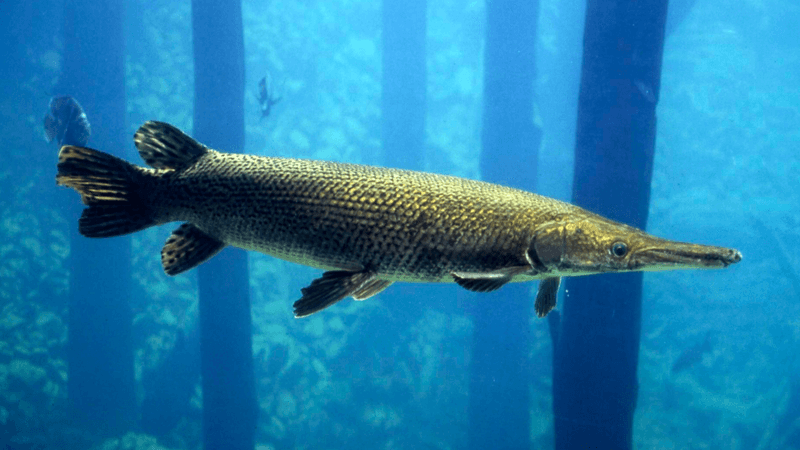
The formidable alligator gar is as much a conversation starter as it is a challenge to keep. With its armored scales and torpedo-like shape, it possesses a prehistoric allure. Although its appearance might be intimidating, this gar is relatively calm. Due to its size, a spacious tank is essential.
These fish can grow up to 10 feet in the wild, though they usually stay smaller in aquariums. Their sharp teeth and large mouths mean they need to be housed with similarly sized tank mates to avoid accidental snacking. Their diet requires variety and quality nutrition.
2. Spotted Gar
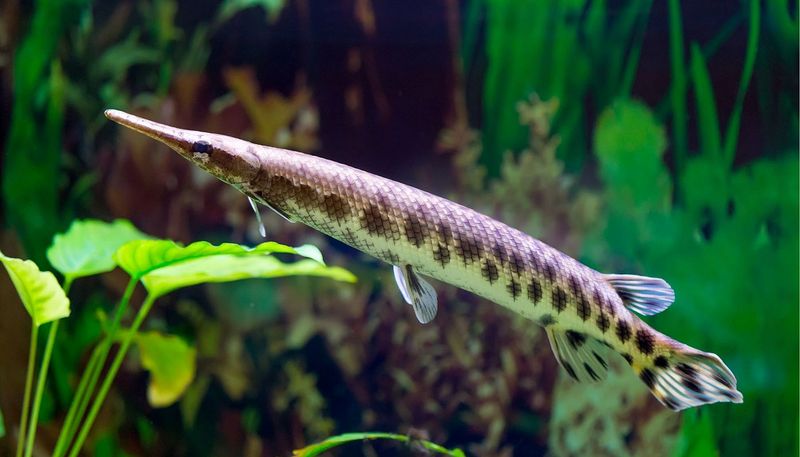
The spotted gar is like nature’s own abstract artwork, speckled with irregular spots that provide excellent camouflage. This species prefers slower-moving waters and thrives in well-oxygenated tanks. A peculiar characteristic is its ability to breathe air, thanks to its vascularized swim bladder.
Spotted gars are generally less aggressive and can coexist with other robust fish. Their diet isn’t fussy, but they thrive on live food. Regular water changes and ample swimming space are key to keeping them healthy. Their striking pattern adds a touch of the wild to your aquatic ensemble.
3. Longnose Gar
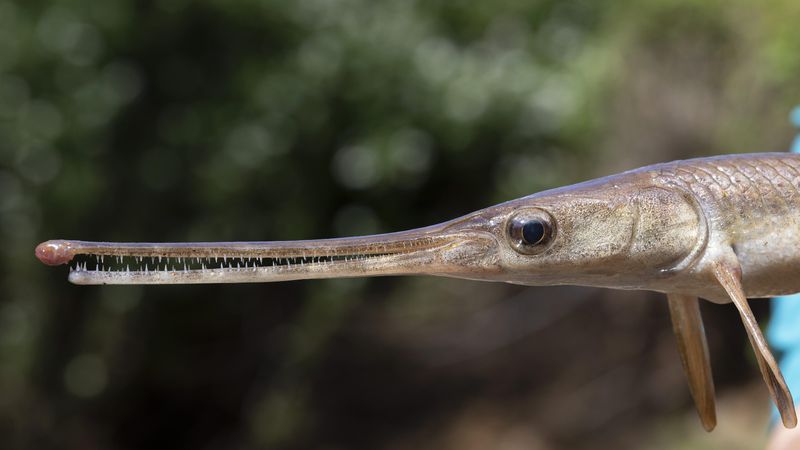
With a nose as long and slender as its name suggests, the longnose gar is an elegant yet quirky resident for your tank. These gars can grow up to 6 feet, making them better suited to very large aquariums. They have a predatory nature but can be surprisingly docile with proper care.
The elongated snout is not just for show; it aids in catching prey. Their diet consists mainly of fish, requiring a well-maintained environment. Patience is needed to manage their feeding and territorial needs, but their elegant swimming is a mesmerizing spectacle.
4. Florida Gar
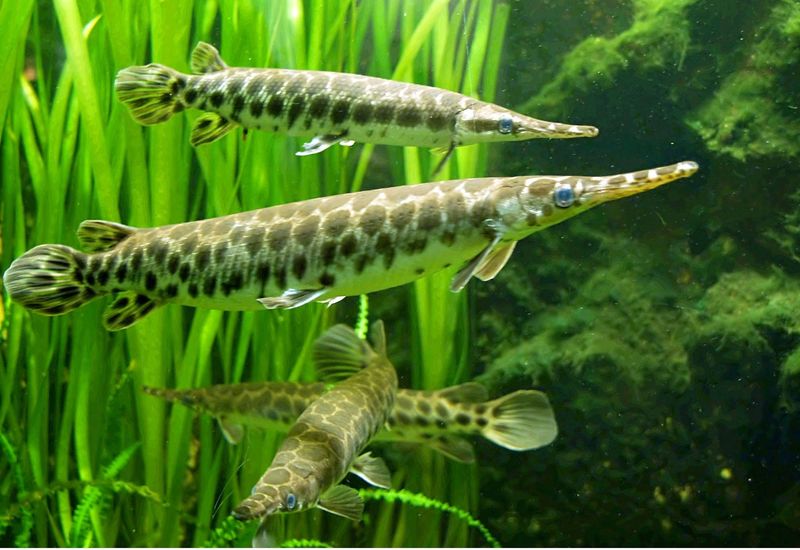
Florida gars bring a touch of the tropics with their olive-brown hue and speckled charm. This medium-sized gar is adaptable and can thrive in both freshwater and slightly brackish environments. Its personable nature makes it a popular choice among enthusiasts.
They require a varied diet and appreciate tanks with hiding spots. Although they are generally peaceful, they can be territorial during feeding. Their unique coloration allows them to blend seamlessly into their surroundings.
5. Shortnose Gar
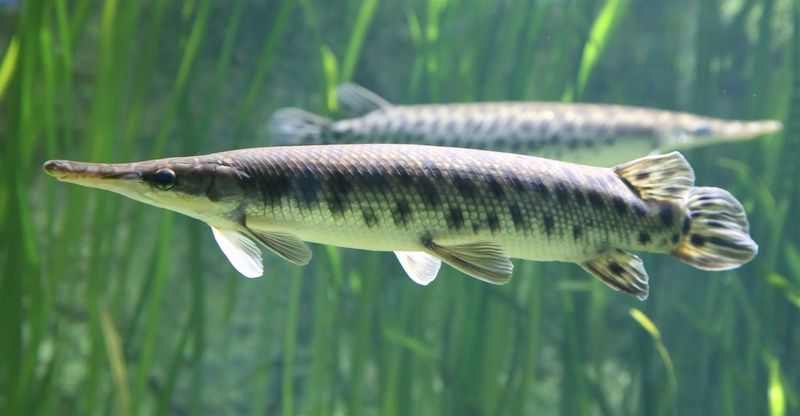
The shortnose gar, with its robust stature, is a less common but equally fascinating option. Its stout body and shorter snout set it apart from its relatives. This gar is known for being hardy and adaptable, making it somewhat easier to care for than others.
They do well in large community tanks when paired with non-aggressive species. Feeding them can be an adventure; they enjoy live prey but will accept frozen foods. Their preference for slow-moving or stagnant waters means a steady filtration system is a must.
6. Tropical Gar
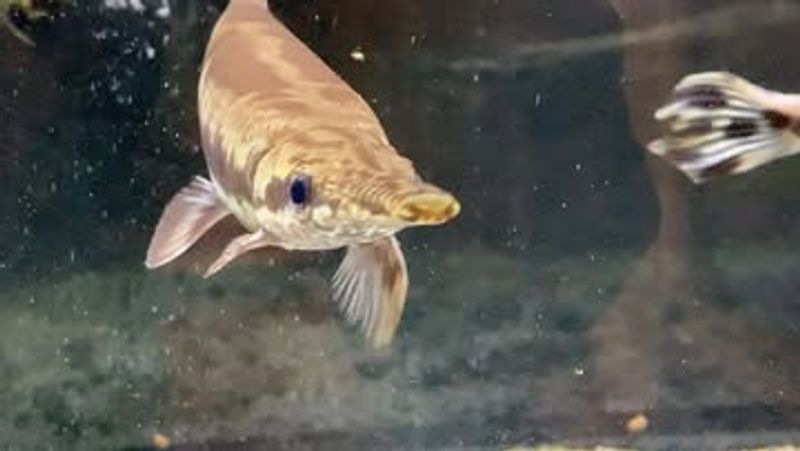
Tropical gars are the vibrant gems of the gar family, often boasting a more colorful appearance. Their adaptability to warmer temperatures makes them suitable for tropical-themed tanks. Despite their striking appearance, they require specific conditions to thrive.
These gars are active swimmers and need plenty of space to move. A diet rich in variety helps maintain their vivid colors and health. Although they are generally peaceful, they enjoy the company of similarly sized fish.
7. Cuban Gar
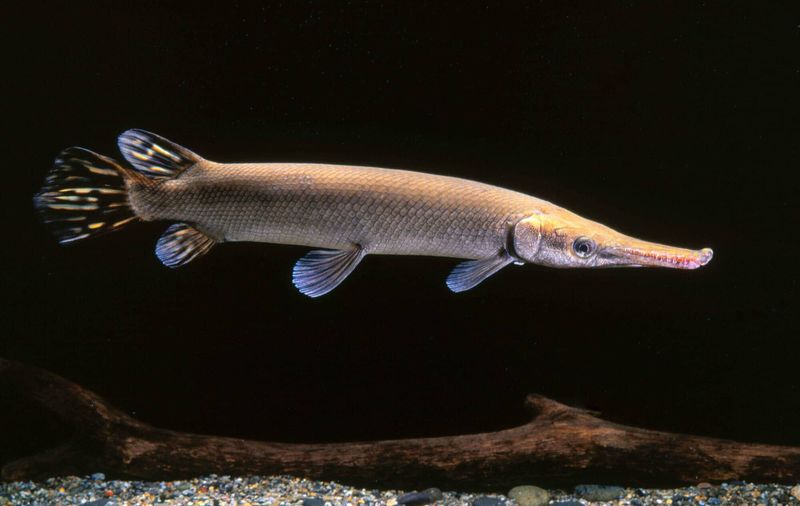
The Cuban gar is a rare and exotic choice for aquarists willing to undertake its challenges. Known for its elongated form and unique patterning, it hails from the freshwater habitats of Cuba. This gar requires a spacious environment to accommodate its potential size.
They are predatory and should be housed with caution, ensuring tank mates are large enough to not be considered prey. Their diet is primarily carnivorous, favoring live fish. Maintaining stable water conditions is crucial for their health.
8. Needle Nose Gar
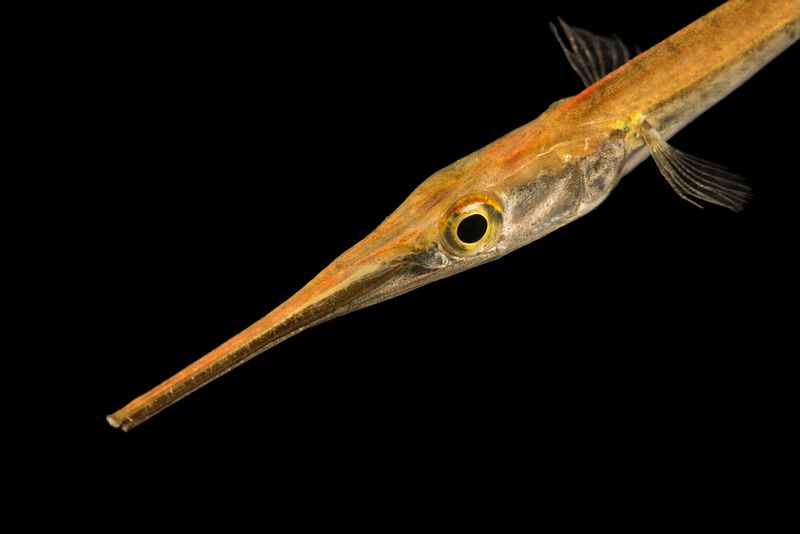
The needle nose gar, aptly named for its slender and elongated snout, brings a touch of the extraordinary to an aquarium. It is one of the smaller gar species, allowing more aquarists the chance to enjoy its unique form. Despite its diminutive size, it retains the predatory instincts of its larger cousins.
They thrive in a well-oxygenated tank with plenty of swimming room. Their diet is diverse, often including insects and small fish. This gar is best kept with other robust species to prevent territorial disputes.


